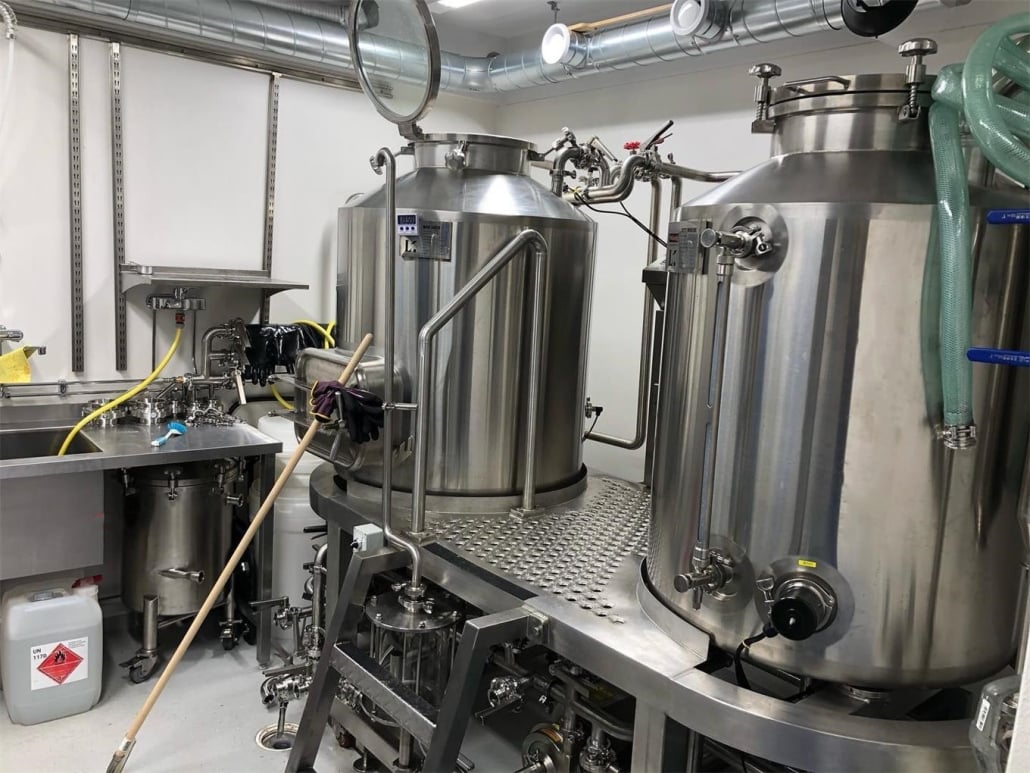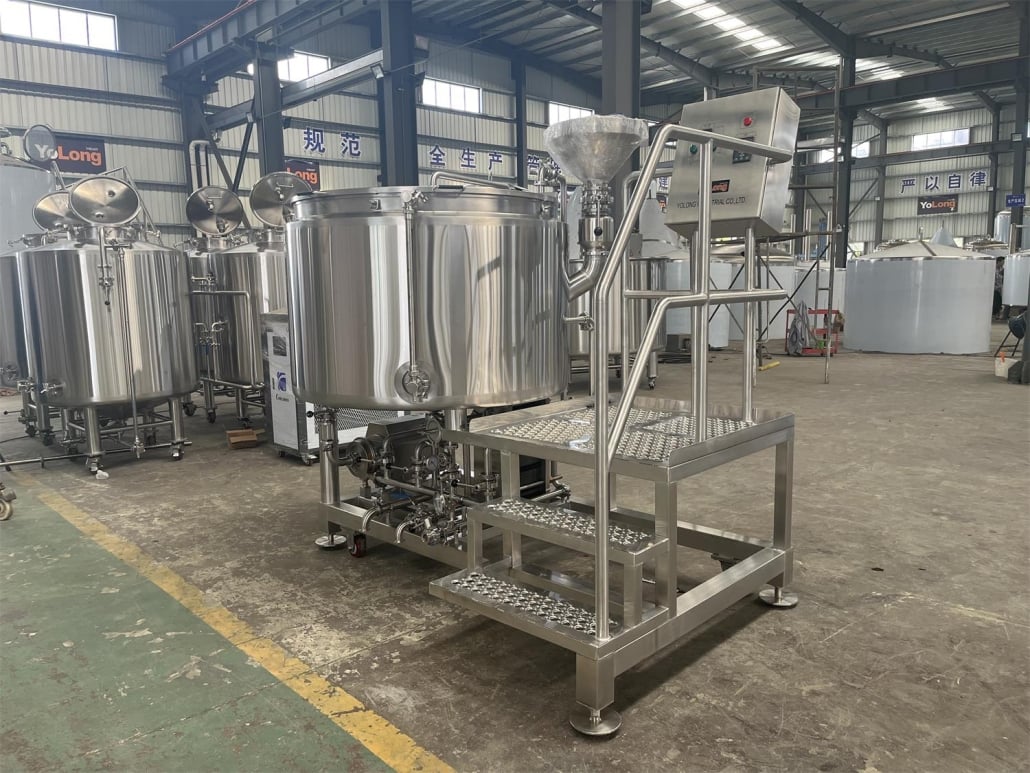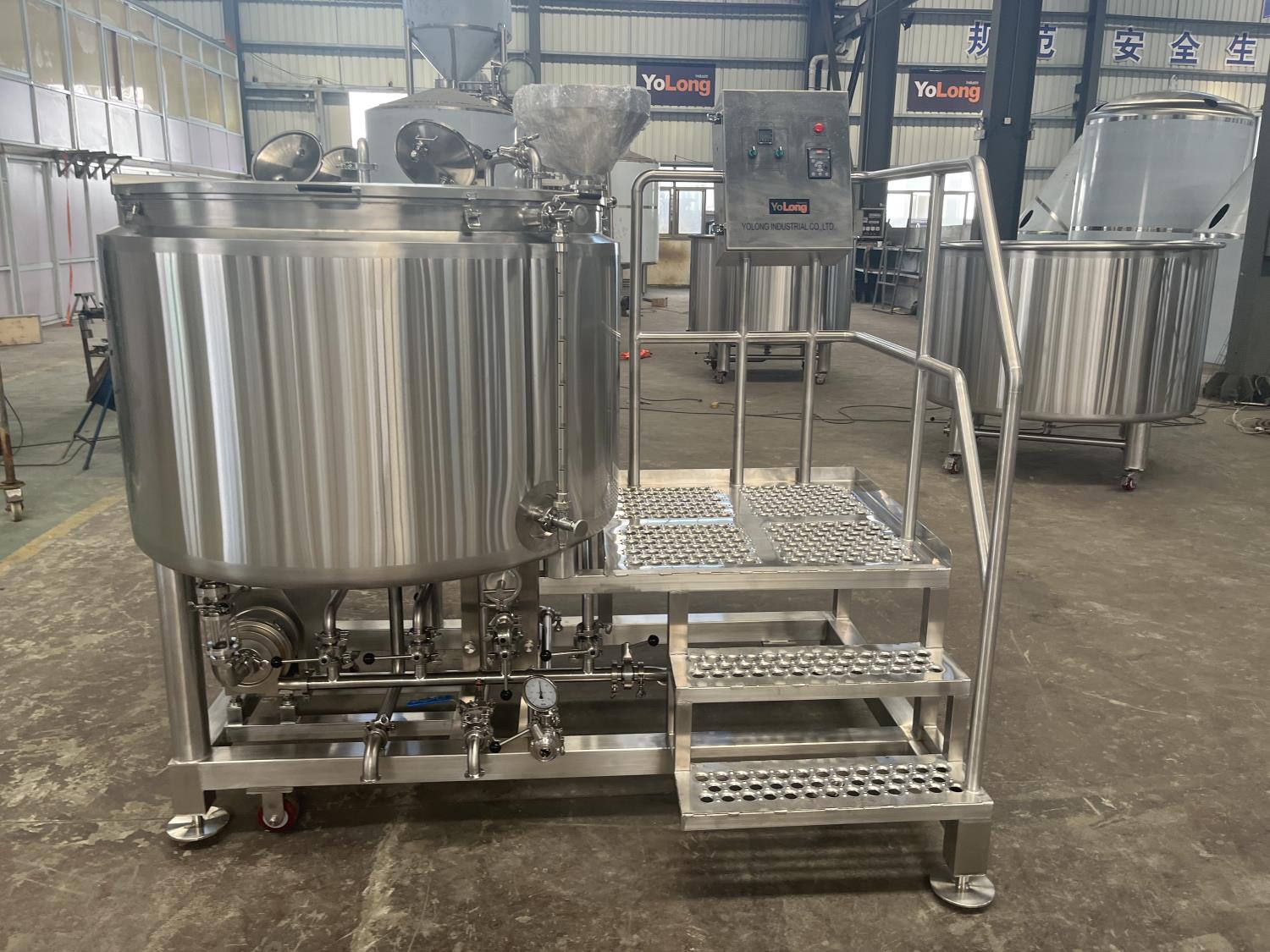The Ultimate Guide to Automatic Beer Machines
Overview: Discovering the Magic of Automatic Beer Machines
Imagine walking into your favorite bar or restaurant, craving that perfectly chilled, frothy pint of beer, only to find that it’s being served to you not by a bartender but by a sleek, efficient machine. Welcome to the future of beer dispensing—automatic beer machines. These marvels of modern technology are transforming how we enjoy our favorite brews, offering consistency, speed, and a touch of novelty that appeals to both casual drinkers and beer aficionados.
Automatic beer machines, also known as automated beer dispensers or smart beer taps, are revolutionizing the beverage industry. They’re designed to pour the perfect pint every time, minimizing waste and maximizing efficiency. In this guide, we’ll dive deep into everything you need to know about these innovative devices, from their benefits and types to installation, operation, and maintenance.
Present Equipment Guide: Understanding Automatic Beer Machines
Automatic beer machines come in various designs and functionalities, catering to different needs and preferences. Here’s a comprehensive look at the different types of equipment available.

Types of Automatic Beer Machines
| Type | Description | Key Features |
|---|---|---|
| Single Tap Dispensers | Ideal for small venues or home use, these machines feature a single tap for dispensing beer. | Compact size, easy to use, perfect for limited space. |
| Multi-Tap Dispensers | Suitable for larger establishments, these machines can dispense multiple types of beer simultaneously. | Multiple taps, customizable options, higher capacity. |
| Self-Serve Dispensers | Allows customers to serve themselves, enhancing the customer experience and reducing wait times. | User-friendly interface, pay-per-ounce system, enhances customer interaction. |
| Smart Dispensers | Equipped with advanced technology for monitoring and controlling beer flow and temperature. | IoT integration, real-time data analytics, temperature control. |
| Portable Dispensers | Designed for events and outdoor use, these dispensers are easy to transport and set up. | Lightweight, battery-operated options, ideal for mobile setups. |
| Commercial Dispensers | Built for high-volume use in bars, restaurants, and breweries. | Durable construction, high flow rate, integration with existing systems. |
Brewing Process: How Automatic Beer Machines Work
The brewing process is a meticulous journey from grain to glass, and the dispensing stage is crucial for maintaining the quality and flavor of the beer. Automatic beer machines streamline this final step with precision and efficiency. Here’s a detailed look at how these machines operate:
- Keg Connection: The machine connects to a keg of beer, which is stored under optimal conditions to preserve freshness.
- Cooling System: Most automatic beer machines have an integrated cooling system to ensure the beer is served at the perfect temperature.
- Flow Control: Advanced flow control mechanisms regulate the beer’s pour speed, reducing foam and ensuring a consistent pour.
- User Interface: For self-serve models, a touchscreen or tap card system allows users to select and pour their beer.
- Cleaning Cycle: Regular cleaning cycles are automated to maintain hygiene and prevent contamination.
Capacity, Space, Design, and Customization
When selecting an automatic beer machine, consider factors like capacity, space, design, and customization options. These aspects can significantly impact the machine’s performance and suitability for your specific needs.
| Feature | Details |
|---|---|
| Capacity | Ranges from small units for home use (serving 1-2 kegs) to large commercial models (serving multiple kegs). |
| Space Requirements | Compact models fit into small spaces, while larger units require dedicated areas in bars or restaurants. |
| Design | Aesthetic options include sleek, modern designs and customizable finishes to match interior decor. |
| Customization | Options for branding, multiple tap configurations, and integration with other bar equipment. |
Suppliers and Price Range
The market offers a variety of suppliers and price ranges for automatic beer machines. Here’s an overview to help you make an informed decision:
| Supplier | Price Range | Key Offerings |
|---|---|---|
| Kegtronics | $1,000 – $5,000 | Focus on smart dispensers with IoT capabilities. |
| BeerTech | $800 – $4,500 | Known for durable commercial dispensers and self-serve options. |
| TapMaster | $1,500 – $6,000 | Offers a wide range of multi-tap and portable dispensers. |
| SmartPour | $1,200 – $5,500 | Specializes in customizable designs and advanced flow control systems. |
| DraftPro | $900 – $4,000 | Provides a variety of single tap and compact models for home and small venue use. |
Installation, Operation, and Maintenance
Proper installation, operation, and maintenance are critical for the optimal performance of automatic beer machines. Here’s what you need to know:
| Aspect | Details |
|---|---|
| Installation | Professional installation is recommended to ensure correct setup and integration with existing systems. |
| Operation | User-friendly interfaces and automated features make these machines easy to operate, even for beginners. |
| Maintenance | Regular cleaning cycles, checking connections, and software updates are necessary to maintain performance. |
Choosing the Right Supplier
Selecting the right supplier for your automatic beer machine involves considering several factors. Here’s a guide to help you make the best choice:
| Criteria | Details |
|---|---|
| Reputation | Look for suppliers with positive customer reviews and a proven track record in the industry. |
| Support Services | Ensure the supplier offers robust customer support and after-sales service. |
| Warranty | Check the warranty terms and conditions to safeguard your investment. |
| Customization Options | Opt for suppliers who offer customization to meet your specific needs. |
| Price vs. Value | Consider the overall value offered by the supplier, not just the price. |
Comparing Pros and Cons: Advantages and Limitations of Automatic Beer Machines
Automatic beer machines come with their own set of advantages and limitations. Here’s a comparative look to help you understand the pros and cons:
| Aspect | Advantages | Limitations |
|---|---|---|
| Efficiency | Consistent pours, reduced waste, and faster service. | Initial setup cost can be high. |
| User Experience | Enhanced customer interaction, novelty factor. | Some customers may prefer traditional bartender service. |
| Maintenance | Automated cleaning cycles reduce manual effort. | Requires regular maintenance and potential software updates. |
| Customization | Flexible designs and branding options. | Customization may increase overall cost. |

FAQ
Here are some common questions and answers regarding automatic beer machines:
| Question | Answer |
|---|---|
| What types of beer can I use in an automatic beer machine? | Most machines are compatible with a wide range of beers, including lagers, ales, stouts, and craft brews. |
| How often do I need to clean the machine? | Regular cleaning cycles are typically automated, but it’s recommended to perform a thorough clean weekly. |
| Can I customize the machine to match my bar’s decor? | Yes, many suppliers offer customization options for branding and aesthetics. |
| What is the average lifespan of an automatic beer machine? | With proper maintenance, these machines can last several years. |
| Are automatic beer machines eco-friendly? | Many models are designed to reduce waste and are made with eco-friendly materials. |
| Is it difficult to install an automatic beer machine? | Professional installation is recommended for optimal performance and integration. |
Conclusion
Automatic beer machines represent a fascinating intersection of technology and tradition, offering a modern twist on the age-old practice of beer dispensing. Whether you’re a bar owner looking to enhance customer experience or a beer enthusiast seeking convenience at home, these machines offer numerous benefits. By understanding the different types, features, and considerations involved in choosing and maintaining an automatic beer machine, you can make an informed decision that perfectly suits your needs.
Additional FAQs About Automatic Beer Machines (2025)
1) How do automatic beer machines reduce keg waste compared to manual taps?
Flow meters and adaptive foam control optimize pour rate and stop at target volumes, typically reducing waste by 10–20% versus manual service.
2) Can self-serve automatic beer machines handle age verification and payments?
Yes. Many systems integrate ID scanning, NFC/RFID wristbands or cards, and PCI-compliant payment gateways with pour limits per customer.
3) What gas setup works best for consistent pours?
Use appropriate gas blends: 100% CO2 for most ales/lagers; 25/75 or 30/70 CO2/N2 “beer gas” for long runs and nitro styles. Maintain line pressure matched to beer temperature and carbonation level.
4) How often should lines be cleaned in automated dispensers?
Follow every-2-weeks line cleaning for standard systems and weekly for high-volume lines; run automated CIP cycles plus quarterly deep cleans with alkaline and acid line cleaners.
5) Can smart beer dispensers integrate with POS and inventory systems?
Yes. Leading automatic beer machines offer APIs/webhooks or native integrations to push pour-by-ounce data, update keg inventory, and reconcile sales in real time.
2025 Industry Trends for Automatic Beer Machines
- Self-serve expansion: Stadiums and food halls deploy more pay-per-ounce stations to cut queues and labor load.
- Data-driven ops: IoT telemetry monitors temperature, pressure, keg levels, and foam events to reduce downtime.
- Waste and energy reduction: Better insulation, variable-speed glycol pumps, and predictive cleaning schedules lower utilities and beer loss.
- Compliance-by-design: Built-in age checks, allergen labeling, and cleaning logs support audits and franchise SOPs.
- Premium experiences: Nitro-capable taps, chilled glass rinsers, and dynamic pricing during peak periods.
Benchmark Metrics for Automatic Beer Machines (2024–2025)
| KPI | 2024 | 2025 (proj.) | Notes/Source |
|---|---|---|---|
| Venues using self-serve/pay-per-ounce taps | ~24% | ~32–35% | Industry integrator surveys; trade press |
| Average waste reduction vs. manual taps | 8–15% | 10–20% | OEM field data; operator reports |
| Sites with IoT remote monitoring enabled | ~40% | ~55–60% | Vendor activation rates |
| Line-cleaning adherence (on-schedule) | ~62% | ~75% | Service contractor logs |
| Energy reduction from optimized glycol/insulation | 5–8% | 8–12% | HVAC/R partners; pilot programs |
Authoritative references:
- Brewers Association Draught Beer Quality Manual: https://www.brewersassociation.org/educational-publications/draught-beer-quality-manual
- Cicerone Certification Program (draft quality): https://www.cicerone.org
- National Restaurant Association tech insights: https://restaurant.org
- PCI Security Standards Council (payments): https://www.pcisecuritystandards.org
Latest Research Cases
Case Study 1: Self-Serve Deployment Cuts Wait Times and Waste (2025)
Background: A 20-tap sports bar faced peak-hour lines and 12–14% draft waste.
Solution: Installed 12 self-serve automatic beer machines with RFID payment, IoT monitoring for temp/pressure, and pour limits per user.
Results: Average wait time reduced 38%; draft waste dropped to 6–8%; revenue per guest increased 9% during events; staff redeployed to hospitality.
Case Study 2: Predictive Maintenance Prevents Foam Events (2024)
Background: A concert venue reported recurring foam surges tied to glycol fluctuations and pressure drift.
Solution: Enabled cloud alerts for coil temp variance and PRV drift, added scheduled CIP prompts, and tuned gas blend to 30/70 for long runs.
Results: Foam incidents decreased 60%; keg yield improved ~4%; technician call-outs reduced by 35% over 90 days.
Expert Opinions
- Charlie “The Beer Guy” Bamforth, Ph.D., Distinguished Professor Emeritus, UC Davis
Key viewpoint: “Temperature stability and correct gas balance are the bedrock of perfect draught—automation helps hold those parameters every pour.” - Neil Witte, Master Cicerone, Draught Quality Specialist
Key viewpoint: “Automatic systems shine only if cleaning schedules are honored. Line hygiene and proper restriction balancing remain non-negotiable.” - Mary Pellettieri, QA Consultant; Author of “Quality Management: Essential Planning for Breweries”
Key viewpoint: “Telemetry that logs temperature, pressure, and cleaning events creates defensible QA records and reduces variance across locations.”
Practical Tools and Resources
- Draft quality and operations
- Brewers Association Draught Beer Quality Manual: https://www.brewersassociation.org/educational-publications/draught-beer-quality-manual
- Cicerone draft system resources: https://www.cicerone.org
- Compliance and payments
- PCI DSS resources for pay-per-ounce systems: https://www.pcisecuritystandards.org
- State alcohol regulatory portals (check local compliance)
- Monitoring and maintenance
- HACCP/cleaning log templates (restaurant.org): https://restaurant.org
- ASHRAE guidance for refrigeration efficiency: https://www.ashrae.org
- Community and sourcing
- Bar and venue tech insights: https://www.barandrestaurant.com
- ProBrewer forums (draft equipment): https://www.probrewer.com
Last updated: 2025-09-30
Changelog: Added 5 targeted FAQs, 2025 benchmark table for Automatic Beer Machines, two case studies on self-serve implementation and predictive maintenance, expert viewpoints, and curated tools/resources with authoritative links.
Next review date & triggers: 2026-03-31 or earlier if BA draught guidelines update, major OEMs release new IoT/dispense features, or regulatory changes affect self-serve age verification and payments.
Share this entry
Interested in learning more about Brewing Systems including additional details and pricing information? Please use the form below to contact us!
YOLONG BREWERY EQUIPMENT FAQS
- Commercial Brewery / Craft Brewery / Microbrewery / Nanobrewery
- What is The Difference Between Craft Beer and Industrial Beer?
- The Bespoke Differences In Custom Brewing Systems
- Everything You Need to Know About Kettle Souring
- How to Choose Brewing Equipment for Your business?
- How To Choose The-Best Partner To Build Your Commercial Microbrewing System?
- Two Detection Sensors That You Need To Use In Your Brewhouse System
- Remote Control Applications in Brewing Equipment/How does it work?
- How To Clean Your Brand New Brewery Tanks?

